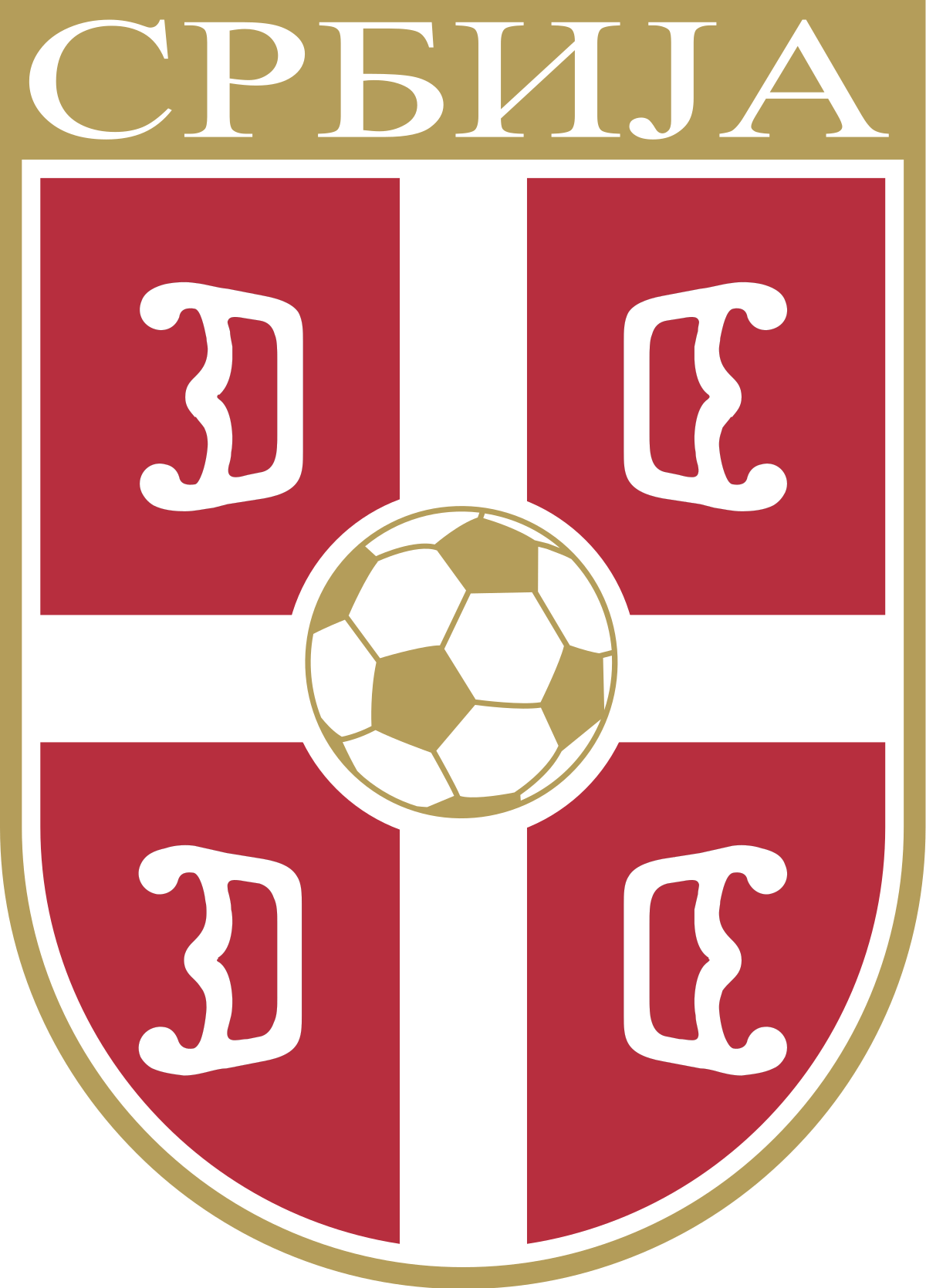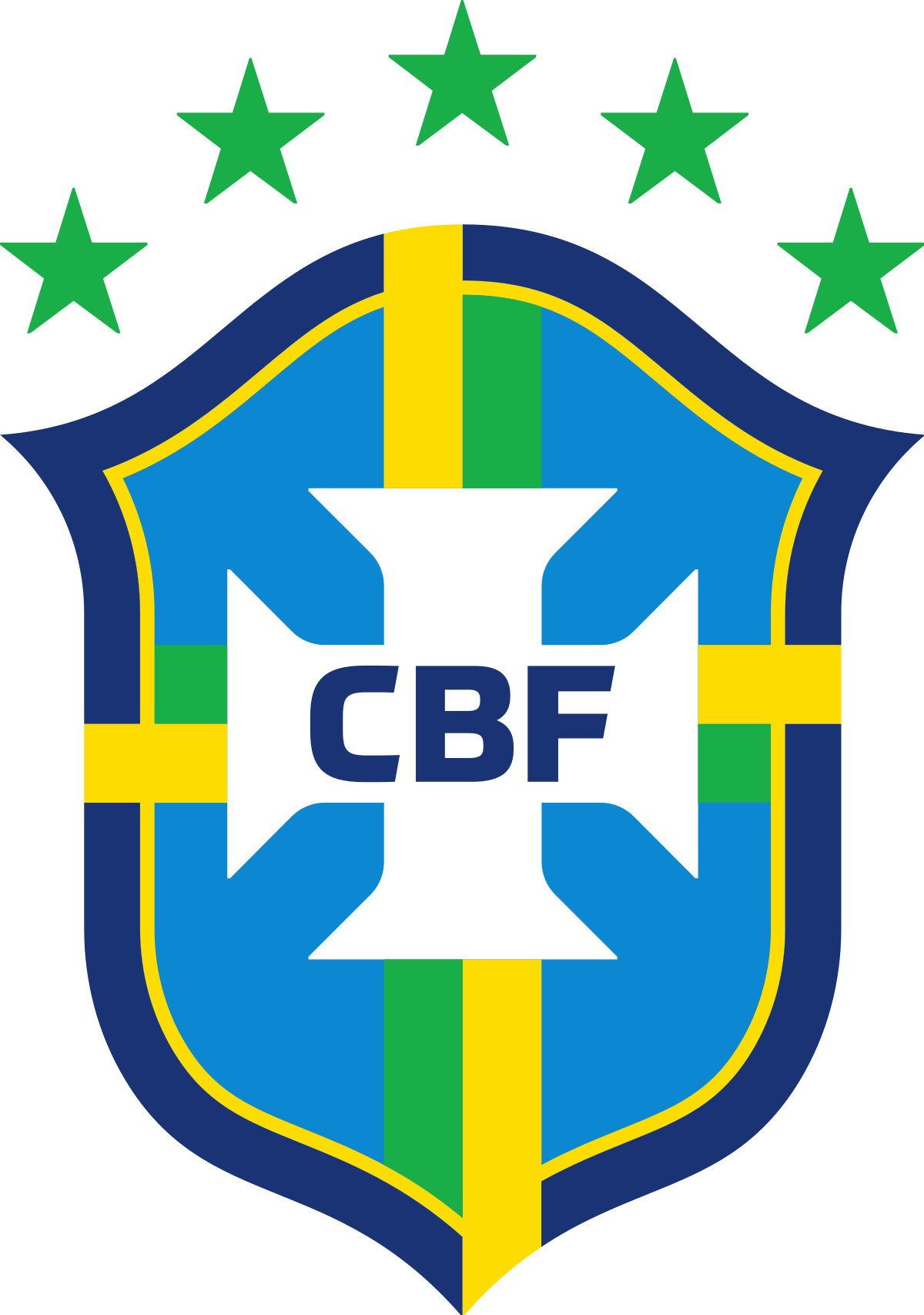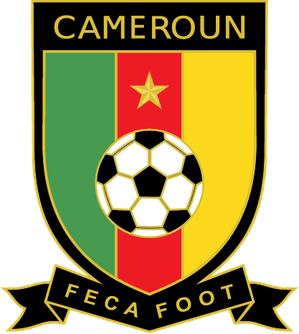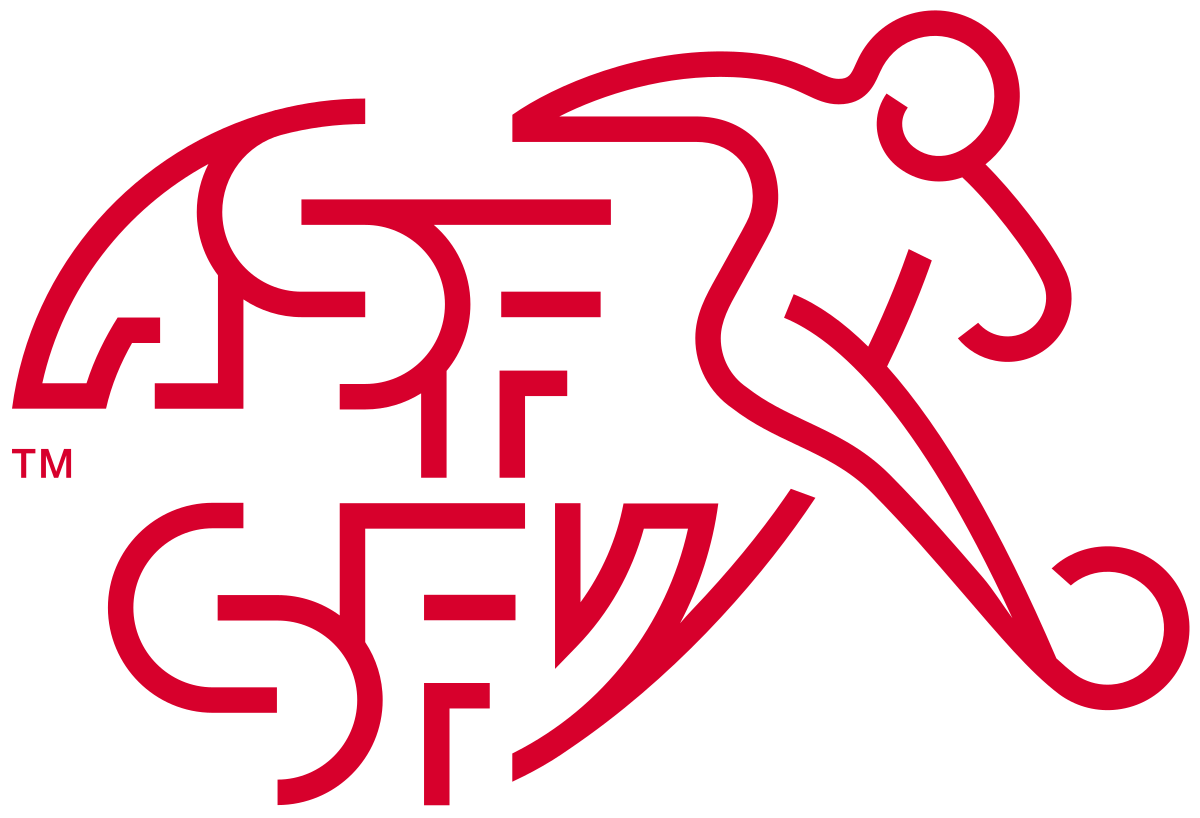
Serbia (The Eagles)
Fourth Place: 2 (1930, 1962)
Quarter Finalists: 3 (1954, 1958, 1990)
Rounds of 16: 1 (1998)
Second Round: 1 (1974)
Group Stage: 5 (1950, 1982, 2006, 2010, 2018)
Current FIFA Ranking: 21
Sergej Milinković-Savić
Read More
Dušan Tadić
Read More
Aleksandar Mitrović
Read More
Dragan Stojković
Read More
Group G Schedule
Game 1 – Thursday 24th November 2022

Brazil
22:00 Qatar Time/19:00 GMT
Lusail Iconic Stadium, Lusail
Game 2 – Monday 28th November 2022

Cameroon
13:00 Qatar Time/10:00 GMT
Al Janoub Stadium, Al Wakrah
Game 3 – Friday 2nd December 2022

Switzerland
22:00 Qatar Time/19:00 GMT
Stadium 974, Doha
Notable Honours
Serbia’s only title win is a Gold Medal at the 1960 Summer Olympics. Their best finish at the World Cup was fourth place in 1930 and 1962. However, they were also runners-up in the European Championship in 1960 and 1968.
Beginnings: The formation of Yugoslavia through to 1954
Note: FIFA considers the Serbia national team to be the official successor of the Kingdom of Yugoslavia/SFR Yugoslavia and FR Yugoslavia/Serbia and Montenegro national teams. Therefore, the history section will cover those teams’ pasts.
The Serbian national team have an unstable history in world football due in no small part to the constant warring and political changes which have fallen upon Yugoslavia. Yugoslavia came into existence following World War I in 1918, known as the Kingdom of Serbs, Croats and Slovenes from then until 1929 when it became the Kingdom of Yugoslavia. The national team played their first game in 1919, still under the former name, being decimated 7-0 by Czechoslovakia. In entering the 1930 World Cup, a year after the renaming, the country’s football association was relocated from Zagreb (now the capital of Croatia) to Belgrade (now the capital of Serbia). The Croats were infuriated and refused to allow players from Croatian clubs to play for the nation at the tournament. Regardless, having travelled by ship from Europe, the team (consisting of Serbian-based players) was the youngest at the first World Cup, at an average age of just under 22. They delighted the Uruguayan spectators with their attacking football, beating South American nations Brazil and Bolivia. However, in the semi-final, the young team were destroyed 6-1 by Uruguay. Finishing in fourth place, however, still represented a success, and the Yugoslavs had been part of history by competing in the inaugural World Cup.
The national team, however, did not qualify for the 1934 and 1938 editions in Italy and France respectively. Yugoslavia was dismembered during World War II but re-emerged as the reconstituted Socialist Federal Republic of Yugoslavia (SFR) following World War II. Yugoslavia played in the following four World Cups between 1950 and 1962. They were unlucky in 1950, drawn with high-flying hosts Brazil in a group where only one team progressed. However, they easily defeated Mexico and Switzerland before bowing out after the initial group stage. In 1954 they finished second again to Brazil in the group. However, a 2-0 defeat to eventual champions West Germany in Geneva sent them home. Present in both the 1950 and 1954 squads was forward Rajko Mitic, who scored 32 goals in 59 games for Yugoslavia between 1946 and 1957. Indeed, Red Star Belgrade’s stadium is now named after him. Another star at these tournaments was Stjepan Bobek, a forward renowned for his goalscoring ability, vision, passing and technical ability. Bobek is widely considered one of Yugoslavia’s greatest-ever players.
Olympic title and Runners-up in European Nations’ Cup
West Germany participated in Switzerland in 1954, where they experienced their most significant achievement yet, triumphing for the first time. The Germans had been decimated 8-3 in the group by Hungary’s famous Golden Team, consisting of players such as Ferenc Puskas, Nandor Hidegkuti, and Sandor Kocsis. In the knockout stage, defeating Yugoslavia and a handsome victory over Austria set up a second showdown with the Hungarians in the final. Hungary were flying high and overwhelming favourites, having outscored their opponents 17-3 throughout the tournaments, while the Germans had been outscored 9-7. As Hungary were also Olympic champions and had not lost a match for four years, nobody gave the Germans a chance. However, in what has become known as the ‘Miracle of Bern’, West Germany came back from 2-0 down to win the match 3-2, with Helmut Rahn scoring two. Hungary were stunned, and Herberger took much credit for his tactics of lulling them into a false sense of security in the group match. In the final, freeing legendary captain and attacking midfielder Fritz Walter from defensive duties and attacking from the wings also aided their victory. It was the start of Germany’s now glorious footballing history. More importantly, it also created a sense of unity in a divided post-war nation.
A Mixed Era
Fourth place in Chile 1962 followed with Galic as captain, after heavy defeats of Uruguay and Colombia in the group stage and revenge over West Germany in the quarter-final. They lost to the Czechs in the semi-final and hosts Chile in the third-place match. However, their showings at the World Cup had been quite impressive up until now, with two fourth-place finishes and two quarter-finals in five appearances.
The next twelve years were mixed for Yugoslavia – on the one hand, they failed to qualify for the 1966 and 1970 World Cup tournaments, as well as Euro 1964 and Euro 1972. However, on the other, they managed to finish as runners-up to hosts Italy in Euro 1968, having beaten England in the semi-final. A young squad including talented forward Dragan Dzajic (who remains the country’s most capped player with 85 appearances) and coached by Mitic had done themselves proud. In 1974, the squad included players such as Miroslav Pavlovic, Ilija Petkovic, and a young Vladimir Petrovic. In West Germany, Yugoslavia made the second round after draws with Brazil and Scotland and a famous 9-0 win over Zaire. This match remains the joint-biggest victory in World Cup history. The second round, however, did not go well, with defeats to the hosts, Poland and Sweden. Yugoslavia then hosted Euro 1976, finishing in fourth place in the four-team tournament following losses in extra time to West Germany and the Netherlands.
Failures to qualify for Argentina 1978 and Euro 1980 followed before the team made their return in Spain ’82, but they failed to make an impression. They were eliminated in the group stage following a draw with Northern Ireland and a defeat to the hosts. There was minor consolation with a victory over Honduras in the last game, making the group look a little more respectable. However, at the 1984 Summer Olympics, the Yugoslavs took the Bronze Medal, with a 5-2 victory over West Germany in the quarter-final being a particular highlight. They did qualify for Euro 1984 too, but finished bottom of their group thanks to losses to Belgium, Denmark and hosts France. A 5-0 defeat by an exciting, emerging Danish side had particularly stung.
Italia ’90 and ‘The Brazilians of Europe’
After failing to qualify for Mexico 1986 and Euro 1988, Yugoslavia returned to the World Cup in Italia ’90. Throughout their history, the Yugoslavs had built a reputation as a very entertaining and skilful team, earning the moniker ‘The Brazilians of Europe’. The potential for this was abundantly clear as the 1990 squad was selected. The pool of players included many youngsters who had been so impressive in winning the 1987 FIFA World Youth Championship. Indeed, forward Davor Suker scored six goals at the tournament. Due to warring in their homeland, which threatened to tear itself apart, some players from that team were not available for selection for the 1990 senior squad. However, some supremely gifted youngsters were present such as Robert Jarni, Dejan Savicevic, and the enigmatic Robert Pronisecki. Also included in the squad was attacking midfielder and current Serbia coach Dragan Stojkovic, who, like Prosinecki, was fabled for his outstanding technique, vision and creative genius.
After a slow start where eventual champions West Germany resoundingly beat them, Yugoslavia edged past Colombia and destroyed the United Arab Emirates 4-1. Progression set up a meeting with Spain in the round of sixteen. The Yugoslavs played very well in the match, with Stojkovic scoring in regular time and then again with the winner in extra time. The nickname seemed appropriate, but a shootout defeat to Argentina followed in the quarter-finals. However, people will never forget the 1990 team for their exquisite talent and the fact that they could have achieved much more.
War at Home, Disqualification, and Return
FR Yugoslavia then dissolved during hostilities to be replaced by the Federal Republic (FR) of Yugoslavia in 1992. Yugoslavia qualified for Euro 1992 but were disqualified due to the troubles – interestingly, their replacement Denmark went on to win the tournament. The team was still suspended in 1994 and 1996 due to international sanctions but made their return in France in 1998. Viewed as a potential dark horse for the competition, Yugoslavia were optimistic. Indeed, they contained some of the Serbs from 1990 (as the Croatian players were representing Croatia), young striker Savo Milosevic, and an ageing Stojkovic as captain. In the group stage, both Yugoslavia and Germany finished on seven points, with the Germans taking first place due to superior goal difference. In the round of 16, they played well against an entertaining Netherlands side. However, a last-minute goal by Edgar Davids broke Yugoslav hearts. The team had shown the world that it was a force and was potentially on the rise.
In overcoming foes Croatia to qualify for Euro 2000, Yugoslavia finished second to Spain in a group also containing Norway and Slovenia. The team included players such as Sinisa Mihajlovic (who was known for his fantastic free-kicks), Dejan Stankovic, and Darko Kovacevic. However, the quarter-final was a disaster, with a 6-1 drubbing by the Netherlands, which eliminated the Yugoslavs. This tournament was their most recent appearance at the European Championship, as they failed to qualify for the subsequent five editions.
The Serbia Era and the Hope for Better
A failure to qualify for the 2002 World Cup was then followed by qualification for Germany in 2006. Now known as Serbia and Montenegro, Germany proved to be a disaster, finishing bottom of their group and being annihilated 6-0 by much-fancied Argentina. The backdrop to this certainly did not help, with Montenegro declaring independence from Serbia before the tournament, throwing the team into chaos. Now, as an independent Serbia, the team qualified for South Africa in 2010 but again could not pass the group stage, finishing bottom of a group comprising Germany, Ghana, and Australia. Serbia did not qualify for Brazil 2014, and the team seemed to be declining with the World Cup disappointments in conjunction with the European Championships failures.
They did qualify for Russia in 2018 but were eliminated in the group stage for their third consecutive time, losing out to Brazil and Switzerland in a group also containing Costa Rica. They have qualified again this year and are up against the Brazilians and Swiss again. Boasting more firepower than in previous years, the Serbs will hope to make progress from the group. Who knows if the glory days will ever return, but for now, a knockout place in the World Cup would represent success.
Road to Qualification
UEFA Group A: 1st
Record: Played:8 W:6 D:2 L:0 F:18 A:9 GD:+9 Points:20
Date of Qualification: 14th November 2021
Serbia were drawn into a tough group in qualifying, placed with 2019 Nations League winners Portugal. The group also comprised the Republic of Ireland, Luxembourg, and Azerbaijan. Serbia and Portugal both won their opening games before a meeting in Belgrade between the two finished 2-2, with Serbia coming back from 2-0 down. Further victories for the two teams came on matchday 3. However, Serbia were the odd team in matchday four, while Portugal won in Ireland. Portugal sat out the next game while Serbia won in Luxembourg, then Portugal won in Azerbaijan, whereas Serbia slipped up, dropping points in Ireland. Portugal had thirteen points from five games, and Serbia eleven from five. A 1-0 win in Luxembourg while Portugal sat out put Serbia top of the section, and then both teams won their next games.
Portugal just needed a win to go top of the group next in this yo-yo section, but they stumbled, drawing 0-0 in Ireland. Serbia had to win in Lisbon to avoid the playoffs, with both teams on seventeen points and the Portuguese possessing a superior goal difference. Things started badly when Renato Sanches scored for Portugal after two minutes. However, a goal from Dusan Tadic and a thrilling Alexander Mitrovic header in the final minute secured automatic qualification at the death. Serbia had shocked the Portuguese. Mitrovic was their top scorer in qualification, though they only kept one clean sheet, which they will look to improve on in Qatar.
Meet the Coach: Dragan Stojković (age 57)
Known in his playing days as the ‘Maradona of the Balkans’, Stojkovic was a hugely talented footballer who is widely considered to be one of the greatest players ever to come from Eastern Europe. His most significant club success came in his homeland with Red Star Belgrade. He was also well-known in Japan for seven years at Nagoya Grampus Eight between 1994 and 2001, where he scored 57 goals in 184 appearances. At international level, he was named in the 1990 World Cup’s All-Star Team for Yugoslavia. He also captained the team in the 1998 edition and won 84 caps, scoring 15 goals. He was a fast, enigmatic midfielder with excellent dribbling, passion, vision, flair, and creativity. Indeed, Stojkovic joins the likes of France coach Didier Deschamps and Spain Coach Luis Enrique as one of the best former players turned coach at this tournament.
His career as a coach is not extensive, having been president of Red Star Belgrade between 2005 and 2007. He managed his previous club, Grampus, between 2008 and 2013, winning the J League and Manager of the Year in 2010. He then had a spell in China with Guangzhou R&F. He was appointed manager of Serbia on 3 March 2021, and though the nation missed Euro 2020, they did qualify for the World Cup in the fashion mentioned above. Stojkovic likes his teams to play with the sort of flair and panache he was renowned for as a player but also with physical steel and strength mixed in. In this manner, he takes inspiration as a coach from former Arsenal manager Arsene Wenger, whom he names as an influence.
Possible Starting XI and Style of Play

Vanja Milinkovic-Savic is likely to start in goal, though Marko Dmitrovic and Predrag Rajkovic are possible competition. Stojkovic will likely utilise a back three to accommodate the two centre-forwards, with Strahinja Pavlovic, Milos Veljkovic, and Nikola Milenkovic seemingly poised to start. Pavlovic’s aggression will be vital, but he is prone to positional lapses. At wing-back, Andrija Zivkovic and Filip Kostic will bomb down the sides and look to put in excellent deliveries, taking on players and linking with the attackers. In midfield is Sergej Milinkovic-Savic. He is a complete midfield player who combines attributes such as technique, passing, pressing, power, and being good in the air. Sasa Lukic, Marko Grujic, or Nemanja Gudelj will join him. Ivan Ilic is also an intriguing young player who might get his chance during the tournament.
Up front, the two talented goalscoring forwards Aleksandar Mitrovic and Dusan Vlahovic are joined by playmaker Dusan Tadic playing a free role behind them, assuming they are fit. Mitrovic and Vlahovic are both very physical and strong in the air but also decent on the ball, possessing explosive shots. Tadic is very talented and will look to feed in little balls to the two forwards or dribble and shoot himself. Zivkovic and Kostic can play as wide attackers in case of a formation change. Luka Jovic offers even more depth in forward positions, but his career has stalled as of late. Still, there is no lack of goals in this attack.
As stated, Stojkovic has ample talent at his disposal and likes to play good football with an emphasis on technical ability and physical power. Indeed, Serbia are a physically imposing team, and their strength and guile are good ingredients to mount an assault on their group.
Squad List
Goalkeepers: Marko Dmitrovic, Predrag Rajkovic, Vanja Milinkovic-Savic
Defenders: Stefan Mitrovic, Nikola Milenkovic, Strahinja Pavlovic, Milos Veljkovic, Filip Mladenovic, Strahinja Erakovic, Srdjan Babic
Midfielders: Nemanja Gudelj, Sergej Milinkovic-Savic, Sasa Lukic, Marko Grujic, Filip Kostic, Uros Racic, Nemanja Maksimovic, Ivan Ilic, Andrija Zivkovic, Darko Lazovic
Forwards: Dusan Tadic, Aleksandar Mitrovic, Dusan Vlahovic, Filip Djuricic, Luka Jovic, Nemanja Radonjic
Key Players
Sergej Milinković-Savić
Date and Place of Birth: (27.02.1995, Lleida, Catalonia)
Current Club: Lazio
Caps/Goals: 35/6
Coming from a sporting family – where his father was a footballer, and his mother a basketball player – Milinković-Savić was destined to be a sportsman. He was born in Catalonia and still holds Spanish citizenship, but he started his career at Vojvodina in Serbia. He then moved to Belgian club Genk before getting his big move to Serie A club Lazio in 2015, where he remains. At the Rome club, he won the Coppa Italia in 2019. On an individual note, he was named in the 2018 and 2022 Serie A Teams of the Season. He also played in the 2014 European Under-19 tournament and then won the Bronze Ball at Serbia’s victorious 2015 FIFA U-20 World Cup, highlighting his potential from a young age.
As stated above, Milinković-Savić is a tall, robust, energetic, yet technically gifted midfielder who combines good vision with good passing ability. He is, in many senses, a complete modern midfielder. However, discipline may be an issue, having accumulated 75 yellow cards in his career. Trusted by the coach, how he performs in the heart of Serbia’s midfield will be crucial to their hopes this winter.
Dušan Tadić
Date and Place of Birth: (20.11.1988, Backa Topola)
Current Club: AFC Ajax
Caps/Goals: 90/18
Tadić started his career, like Milinkovic-Savic, at Vojvodina in his homeland. From there, he transferred to Groningen in the Netherlands, where he spent two years before moving to FC Twente, where he spent a further two years. Having scored 46 goals in his time in the Netherlands, Premier League Club Southampton decided to buy him in the summer of 2014. He spent four years there, being a key player, making 134 league appearances and scoring 21 goals. He then moved to Ajax in 2018, and the following year, he scored and made two assists in a Man of the Match performance to knock defending champions Real Madrid out of the UEFA Champions League. This match and his general performances won him 20th place in the 2019 Ballon d’Or.
Indeed, his performances in 2018-2019 were incredible, with many seeing him as Ajax’s player of the season as they won the Eredivisie. He scored 34 goals and registered 19 assists across all competitions. Since then, he has continued his superb form at club level and remains vital for Serbia. A highly talented left-footed player, who can play on either wing or behind the striker, Tadic is known for his vision, passing, creativity, shooting, and dangerous dribbling. He is an exciting maverick of a player, and if Serbia need a moment of magic in any particular match, they will look to Tadić’s genius to provide it.
Aleksandar Mitrović
Date and Place of Birth: (16.09.1994, Smederevo)
Current Club: Fulham
Caps/Goals: 76/50
Mitrović burst onto the scene at the 2013 European Under-19 Championship, named player of the tournament as Serbia emerged victorious. Having also won the Serbian league that season with Partizan, he left to join Anderlecht in Belgium. He subsequently won the Belgian Pro League in 2014 and scored 36 goals in 69 league and playoff appearances. He then joined the English club Newcastle United, but it was a disappointing stint, and he was loaned to Fulham in 2018. A prolific run in the English Championship led to a permanent transfer. He remains at Fulham to this day, having scored 105 goals in 188 appearances. Many of these have come in the Championship, and doubts have been expressed as to whether he could step up to the Premier League. Eleven goals in 2018/2019 showed promise, but Fulham have been a yo-yo club in his time there, and he only managed three goals in 27 games in 2020/2021.
However, back in the Premier League, he has started this season on fire, with 9 goals in 12 matches. He is physically strong, imposing, and good with his feet, but it is in the air where his greatest strength lies, with a penchant for headed goals. With 50 goals for the national team – including the goal which sealed qualification – he will be a focal point for the Serbs. They will look to supply him with service – especially crosses – from the likes of Kostic, Tadic, and Zivkovic in Qatar.
